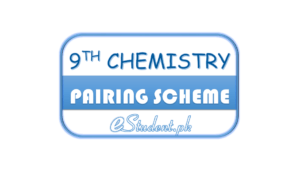Chemistry Notes for Class-9 Chapter-4
Structure of Molecule
If you are looking for Chemistry Notes for Class 9 Chapter-4, then you are on right place, and have found the your required result. on this post you can find the all type Solution for chemistry class 9 problems. so read this post and take benefits for your studies and share with your Friends. Chemistry Notes for Class-9 Chapter-4.
Here are important MCQs for Chemistry Notes for Class 9, chapter 4
Try and Practice/ Play this MCQs Series again and again to get the grip on this MCQs Chapter 04 of Chemistry, Structure of Molecular, 9th Class.
Best of Luck
If you find any mistake in MCQs, please inform us by Commenting or by Contact us menu to improve the Quality of this free content.
Let’s see, How Students Solve this . . . . . . . Results . . .
| User Name | Start | Score |
|---|---|---|
| M | 15:27:42 Feb 10, 2024 | 8% |
| M | 14:26:17 Feb 10, 2024 | 4% |
| ulufuj | 10:45:04 Feb 05, 2024 | 24% |
| fhigw4sd | 10:30:44 Feb 05, 2024 | 47% |
| Jannat | 19:30:58 Jan 25, 2024 | 33% |
| asad faraz | 19:11:12 Jan 22, 2024 | 86% |
| mubeen ahmed | 23:37:57 Jan 20, 2024 | 60% |
| Asad | 18:44:55 Jan 17, 2024 | 77% |
| Ali | 05:25:44 Jan 14, 2024 | 39% |
| Soma | 20:45:54 Dec 13, 2023 | 41% |
| Bakhtawar | 23:01:08 Dec 07, 2023 | 89% |
| Bakhtawar | 17:52:10 Dec 07, 2023 | 65% |
| Bakhtawar | 17:37:30 Dec 07, 2023 | 35% |
| shaista | 12:56:24 Dec 06, 2023 | 58% |
| Ark | 21:43:58 Dec 03, 2023 | 6% |
| Abdullah Fayaz | 16:20:53 Sep 11, 2023 | 8% |
| bear | 01:52:46 Aug 27, 2023 | 80% |
| sadaf shah | 08:00:27 Jul 22, 2023 | 42% |
| Ruqaiya | 17:18:18 May 27, 2023 | 8% |
| M.Shawaiz | 20:21:32 May 21, 2023 | 89% |
| Famia | 20:24:43 May 12, 2023 | 51% |
| Hoorain | 05:54:37 Apr 12, 2023 | 65% |
| Syed Ahmad | 21:46:18 Apr 08, 2023 | 96% |
| Muzmmal | 19:59:24 Apr 07, 2023 | 32% |
| Syed Ahmad | 21:40:13 Apr 02, 2023 | 91% |
| soha zahra | 20:13:08 Mar 22, 2023 | 26% |
| 4 | 23:25:34 Mar 17, 2023 | 51% |
| Sheikh | 09:43:34 Mar 17, 2023 | 20% |
| ❦︎♫︎☽︎ఌ︎ | 22:52:32 Mar 14, 2023 | 76% |
| ..... | 22:25:34 Mar 14, 2023 | 38% |
| AwaisMughal | 20:26:25 Mar 13, 2023 | 56% |
| Syed Ahmad | 12:10:25 Mar 13, 2023 | 83% |
| .... | 18:04:52 Mar 10, 2023 | 38% |
| ... | 17:25:33 Mar 06, 2023 | 21% |
| Hamna abid | 06:39:15 Mar 06, 2023 | 66% |
| Areesha | 02:33:52 Feb 27, 2023 | 10% |
| Nasir jamal | 08:04:52 Feb 25, 2023 | 75% |
| Nasir jamal | 07:56:16 Feb 21, 2023 | 76% |
| Nasir | 09:37:07 Feb 19, 2023 | 86% |
| Nasir jamal | 09:22:27 Feb 19, 2023 | 76% |
| Nasir jamal | 22:42:13 Feb 18, 2023 | 69% |
| Nasir jamal | 17:10:17 Feb 17, 2023 | 53% |
| NAS | 17:40:19 Feb 09, 2023 | 76% |
| NAS | 21:15:33 Feb 08, 2023 | 74% |
| NAS | 21:01:49 Feb 08, 2023 | 47% |
| NAS | 08:20:35 Feb 08, 2023 | 59% |
| NAS | 08:06:44 Feb 08, 2023 | 25% |
| Syed Ahmad | 09:27:12 Feb 06, 2023 | 96% |
| Syed Ahmad | 09:08:56 Feb 06, 2023 | 85% |
| txgx | 12:12:03 Feb 05, 2023 | 11% |
| Ali Hamza | 07:00:29 Jan 27, 2023 | 53% |
| Ali Hamza | 06:54:13 Jan 27, 2023 | 24% |
| Ali Hamza | 06:54:13 Jan 27, 2023 | 24% |
| NAS | 18:18:51 Jan 19, 2023 | 53% |
| NAS | 19:16:38 Jan 17, 2023 | 17% |
| H | 18:58:57 Jan 15, 2023 | 93% |
| NAS | 11:34:33 Jan 15, 2023 | 31% |
| Y | 18:50:26 Jan 14, 2023 | 73% |
| Ahmad | 07:18:35 Jan 13, 2023 | 83% |
| Ahmad | 06:39:00 Jan 13, 2023 | 40% |
| Zobia | 18:37:11 Jan 11, 2023 | 61% |
| saim | 00:55:18 Jan 04, 2023 | 2% |
| T | 16:05:42 Dec 18, 2022 | 75% |
| maryam | 23:58:46 Dec 07, 2022 | 15% |
| pari | 12:55:09 Dec 07, 2022 | 48% |
| yy | 22:48:48 Dec 06, 2022 | 59% |
| bj | 21:45:24 Dec 06, 2022 | 23% |
| Aiman | 11:23:55 Dec 03, 2022 | 82% |
| Mrs Riqza | 23:09:15 Nov 23, 2022 | 46% |
| basit | 11:13:21 Nov 15, 2022 | 10% |
| K.B | 14:39:01 Nov 11, 2022 | 29% |
| Fatima | 17:02:59 Nov 09, 2022 | 5% |
| urooj fatima | 01:30:25 Nov 06, 2022 | 3% |
| Sajjal fatima | 13:40:51 Nov 06, 2022 | 73% |
| mdtgnhjm | 11:40:16 Oct 21, 2022 | 37% |
| Fatima | 11:19:23 Oct 20, 2022 | 89% |
| Fatima | 11:05:03 Oct 20, 2022 | 64% |
| M.Shawaiz | 19:55:42 Oct 19, 2022 | 86% |
| M.Shawaiz | 19:41:34 Oct 19, 2022 | 79% |
| Hadiqa | 16:44:02 Oct 18, 2022 | 75% |
| Saima Shahid | 10:49:03 Oct 18, 2022 | 44% |
| Mudasara | 09:27:07 Oct 16, 2022 | 0% |
| ay | 14:48:50 Oct 04, 2022 | 11% |
| Haris | 09:48:36 Sep 29, 2022 | 79% |
| Nimra | 09:20:34 Sep 25, 2022 | 57% |
| Haseeb | 19:14:32 Sep 21, 2022 | 34% |
| rashi | 20:59:48 Sep 20, 2022 | 4% |
| Zoha | 12:31:56 Sep 11, 2022 | 83% |
| Zoha | 13:10:27 Sep 10, 2022 | 65% |
| butt | 20:13:21 Sep 07, 2022 | 82% |
| Umair hassan | 14:02:12 Aug 27, 2022 | 51% |
| Maria | 20:51:56 Aug 23, 2022 | 61% |
| Aina | 12:28:48 Aug 05, 2022 | 50% |
| Atk | 23:05:22 Aug 03, 2022 | 52% |
| Hasnain Ejaz | 00:12:27 Jun 29, 2022 | 88% |
| Ghjg | 23:55:37 Jun 28, 2022 | 53% |
| Alizeh | 10:51:24 Jun 16, 2022 | 73% |
| Alizeh | 23:46:50 Jun 15, 2022 | 57% |
| Ahmad | 01:24:02 Jun 01, 2022 | 57% |
| Anas | 11:20:16 May 25, 2022 | 67% |
| ReebaJaved | 18:08:07 May 15, 2022 | 70% |
| Hafsa | 18:53:50 May 11, 2022 | 3% |
| abu bakar | 15:44:55 Apr 30, 2022 | 39% |
| Amna | 14:57:44 Apr 18, 2022 | 64% |
| Annas | 22:56:44 Apr 12, 2022 | 10% |
| Fatizah. 7.56 | 17:12:01 Apr 06, 2022 | 1% |
| M.ans | 16:54:49 Dec 30, 2021 | 29% |
| Shamroz | 20:22:26 Mar 31, 2021 | 22% |
| Abdul rehman | 14:20:44 Mar 28, 2021 | 29% |
| Abdul rehman | 13:17:28 Mar 27, 2021 | 11% |
| Shamroz dogar | 09:12:19 Mar 27, 2021 | 12% |
| Wajahat | 22:15:16 Mar 24, 2021 | 26% |
| admin | 15:35:10 Dec 21, 2020 | 2% |
MCQs in PDF Format
(Correct Answers has shown at front end of each question)
. .
Short Question Answer in PDF Format
. .
Long Question Answer in PDF Format
. .
Chemistry Notes, Problems for Class 9th
Chemistry, a new subject for 9th Class, having a lot of concepts all starting from a single definition of the smallest particle of our universe which is called ‘atom’. In the 8th grade usually, we have to study only one book of science that combines chemistry, physics, and biology. But as, we got into 9th class and with every passing day things starts to get more complex now. similarly we got three books instead of just one science book. Chemistry Notes for Class-9 Chapter-4.
And, if you any student of 9th Class feeling difficult to understand the concept of chemistry. Then, these chemistry notes for class 9 are enough. by Understanding chemistry Notes for 9th class means remembering a lot of concepts. Consider that particular subject important in which you want to study for your whole life. And, read more than just the textbook about that particular subject. If you think you want to study chemistry for your whole life that’s great, we need chemists. Chemistry Notes for Class-9 Chapter-4.
Chemistry class 9 pdf / Chemistry Notes for Class-9 Chapter-4
If any student searching to topics like Chemistry Notes for 9th class, Chemistry Notes for Class 9 pdf, Chemistry Notes for Class 9 MCQs, Chemistry Notes for Class-9 Chapter-4, Chemistry Notes for class 9 Gujranwala board, Chemistry Notes for class 9 Lahore board, Class 9 Chemistry notes chapter 4, Chemistry class 9 chapter 4 pdf, Chemistry class 9 chapter-4 short questions, kips notes of chemistry for 9 class, 9th class chemistry solved exercises chapter 4, chemistry class 9 chapter 4 structure of atom, 9th class chemistry notes in English pdf download, 9th class chemistry solved exercises chapter 4 pdf, 9th class chemistry solved exercises chapter 4, Chemistry Notes for Class-9 Chapter-4, 9th class chemistry notes in Urdu pdf download, Chemistry class 9 chapter-4 solved exercise pdf, Chemistry Notes for Class 9 Chapter-4, 9th class chemistry notes in Urdu pdf download, Chemistry class 9 pdf, chemistry 9th class chapter 4 solved exercise, then all the solution if your problem is available within our website eStudent.pk
Chapter wise PDF Notes / Problems / Solution of Chemistry 9th Class
Chapter-01 – Fundamentals of Chemistry
Chapter-02 – Structure of Atoms
Chapter-03 – Periodic Table and Periodicity of Properties
Chapter-04 – Structure of Molecules
Chapter-05 – Physical States of Matter
Chapter-08 – Chemical Reactivity
Pairing Scheme for 2021 – Chemistry 9th Class


This house looks freally good !